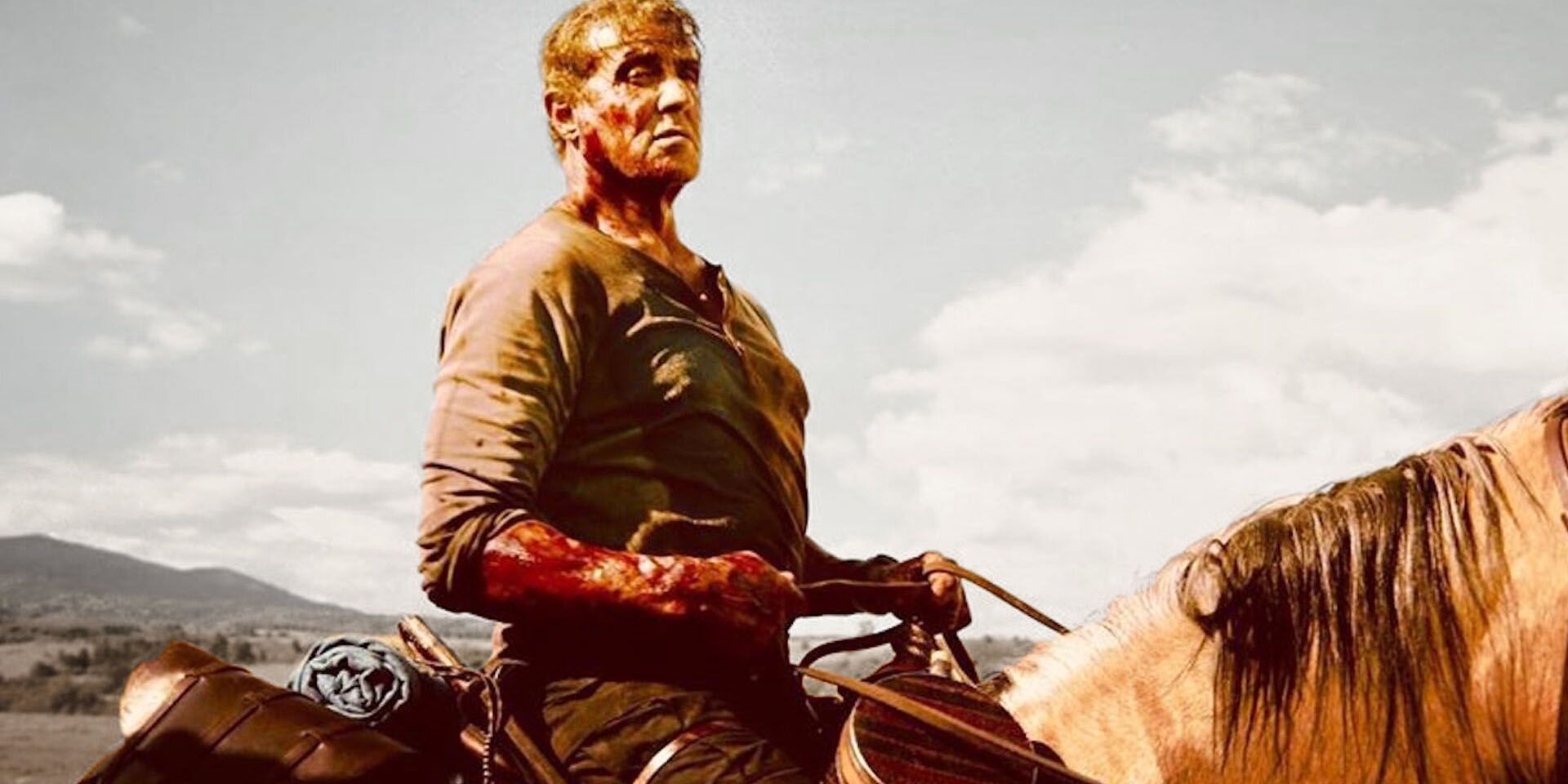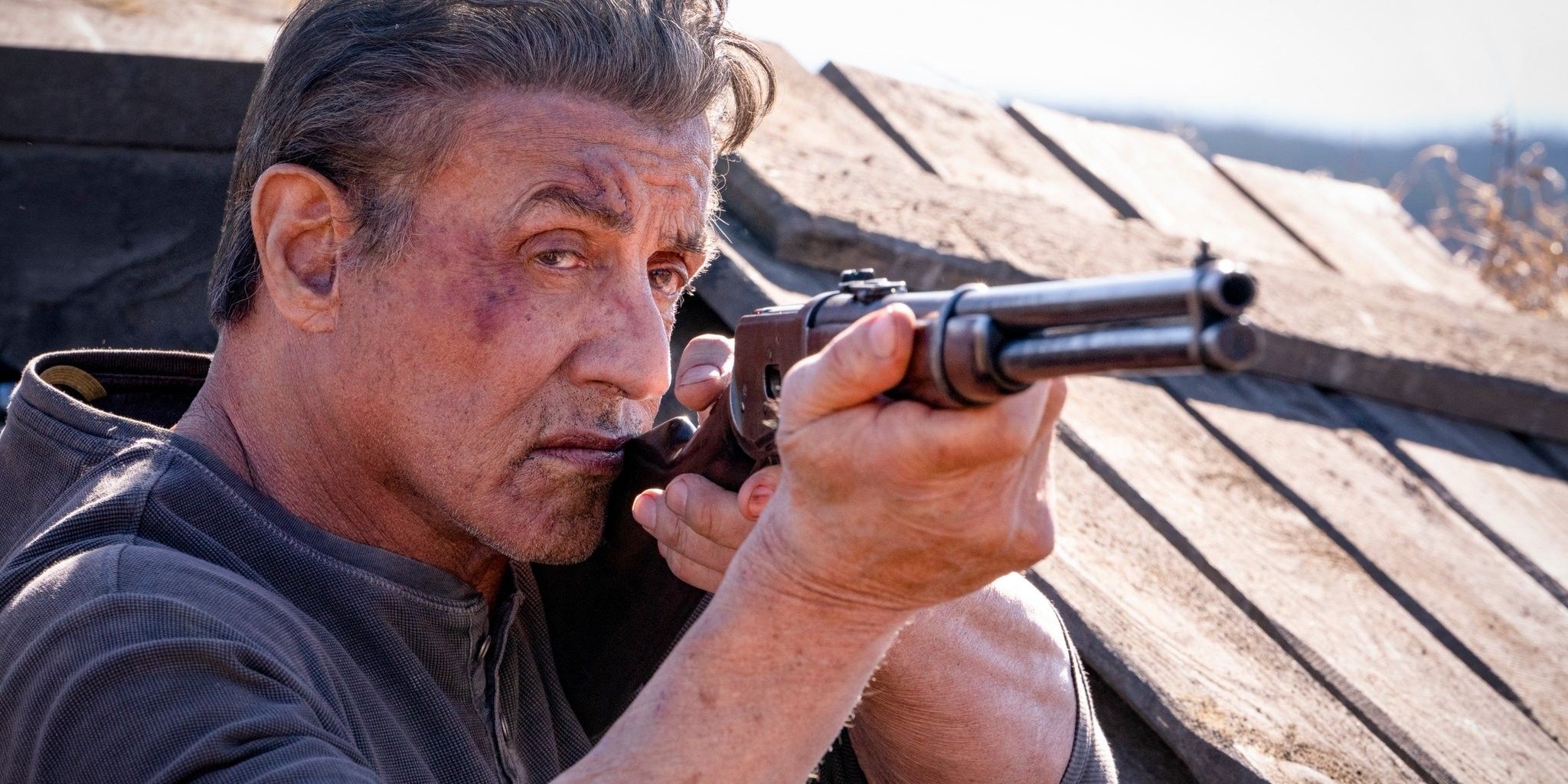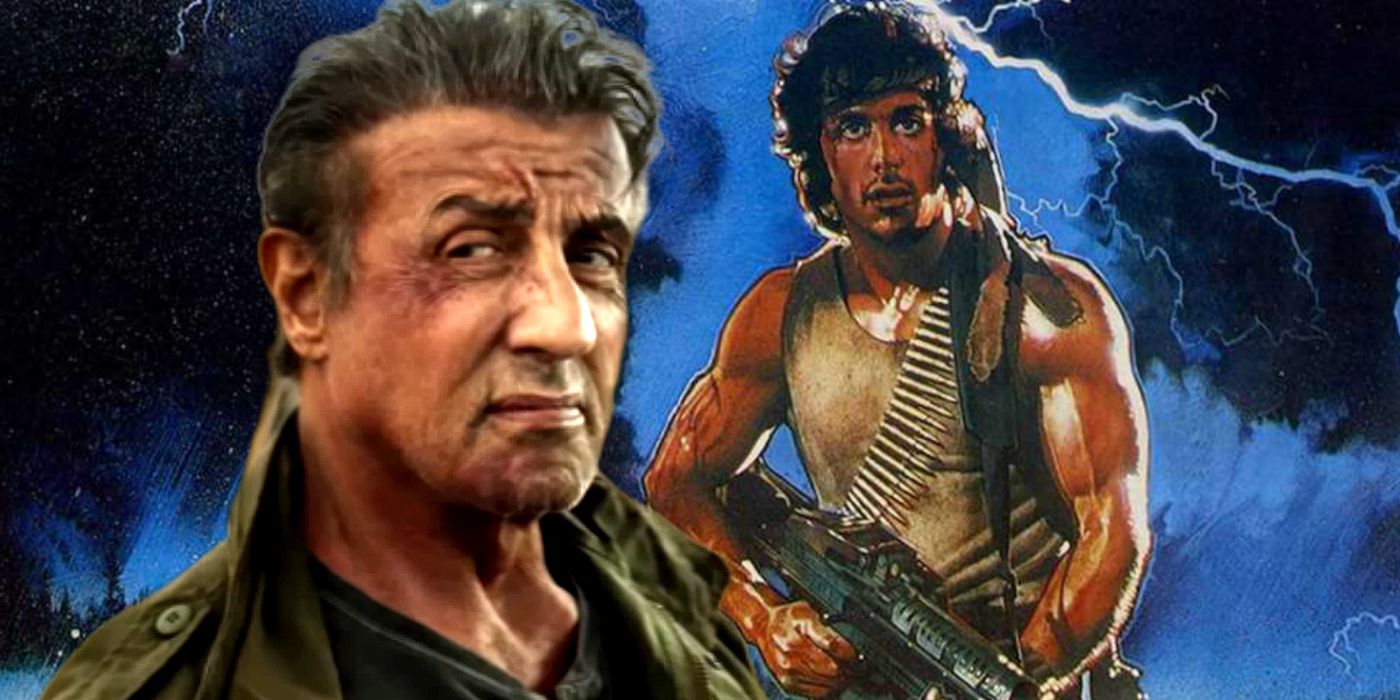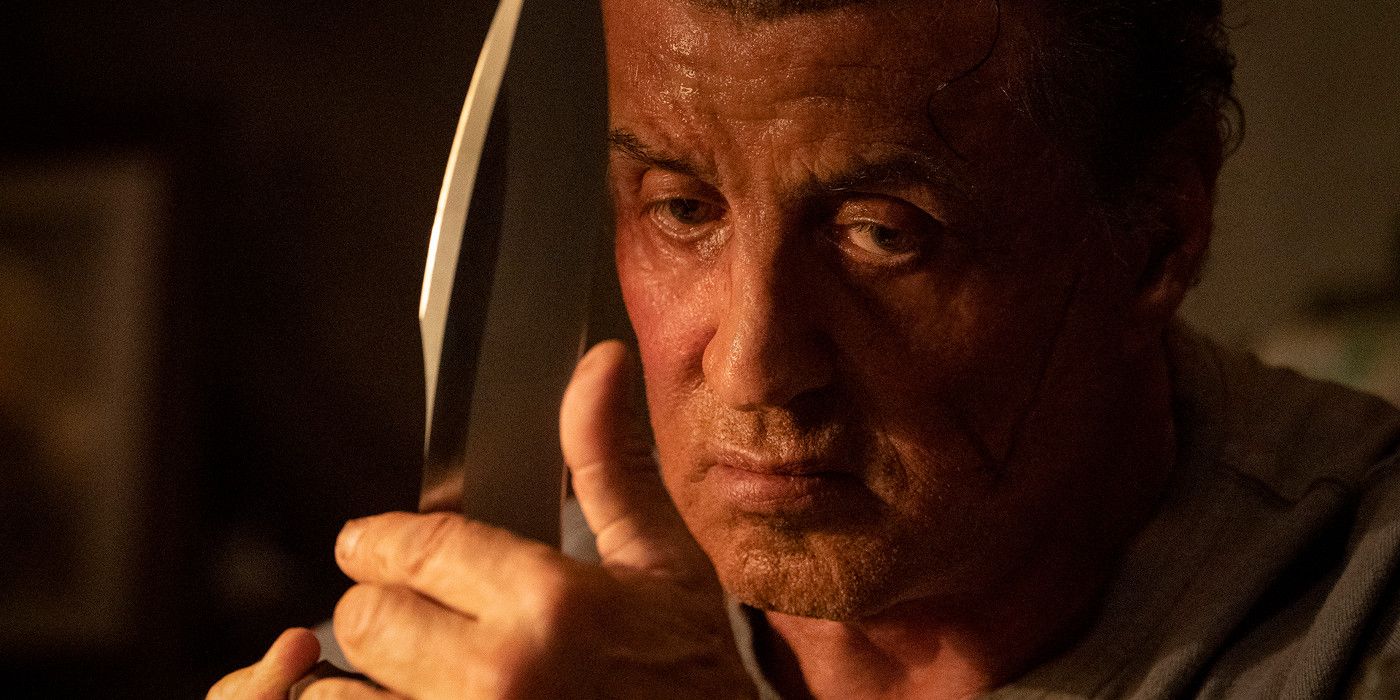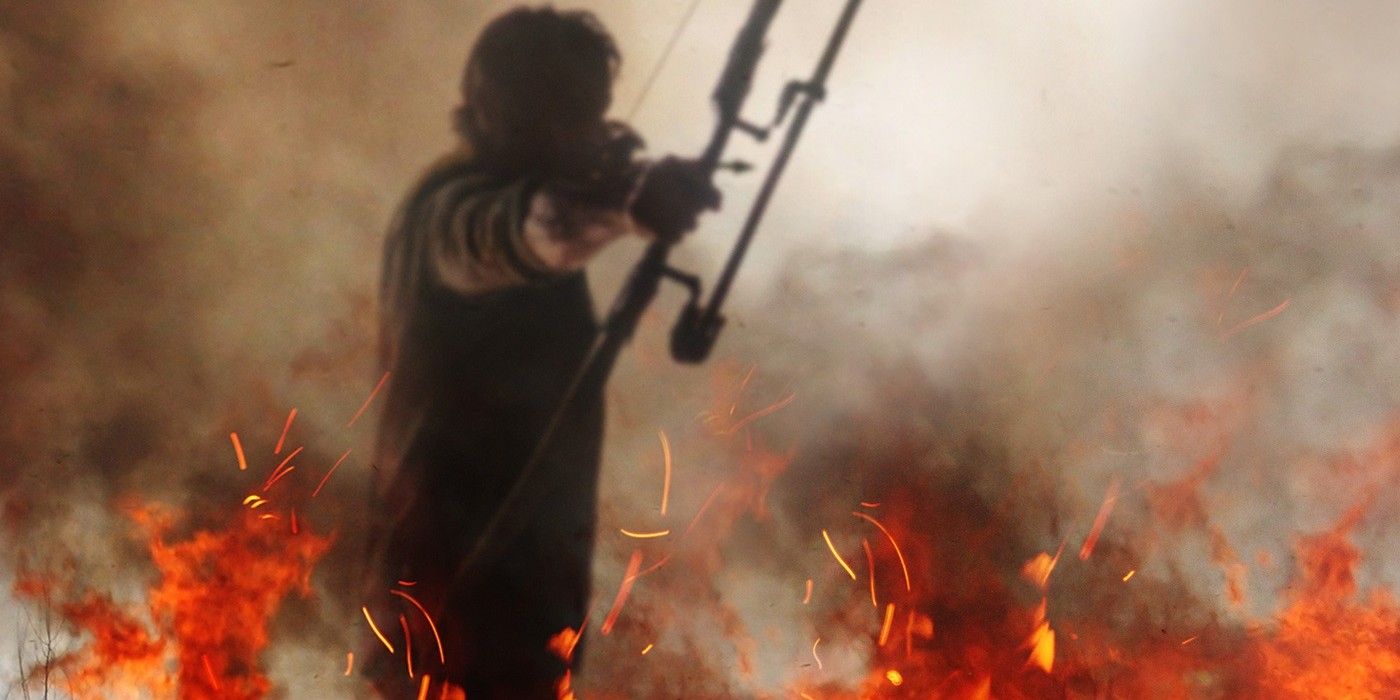Warning: SPOILERS ahead for Rambo: Last Blood.
By the time the credits roll on Rambo: Last Blood, many people are dead, and a significant chapter of John Rambo's journey has come to an end. Last Blood is one of the most violent movies of the decade, laying bare the potential barbarism inherent in humanity. As stated in an earlier entry in the series, "When you're pushed, killing's as easy as breathing."
It came as a surprise when the film was announced, since Rambo 2008 served as something of a definitive ending for the long-running war-themed franchise. That film ended with Rambo returning home to Arizona after decades away from his country. However, even after the journey home, the battle still continues.
In addition to all the righteous blood-letting and testosterone-fueled declarations of murderous intent, Rambo: Last Blood is filled with important developments for the character of John Rambo, as well as the politically-charged themes that have defined the series since its inception. Despite the Mexico/Arizona setting, the film doesn't make any polarizing statements regarding the real-life political showdown at the US/Mexico border, but that doesn't mean it has nothing to say.
Is Rambo Dead At The End Of Last Blood?
Many Neo-Westerns see their heroes head off to their final battle with no expectations of getting out alive. Last Blood feels different because, while Rambo is prepared to die, he is confident enough in his skills to tell his adopted family that he's going to return to his old life as a drifter after he leaves his old family farm. During the final battle itself, he brutally eviscerates the gang attacking his homestead, and he's only injured as a result of his own pride; he denies himself the quick and efficient kill on the gang leader, Hugo, opting instead to "make him feel his rage." While this leads to one of the most shockingly violent kills ever captured on film, with Hugo's heart being ripped out of his chest, it also leads to Rambo being grievously injured by his final opponent.
As the movie ends, Rambo struggles to maintain his composure as he makes his way to the front porch of his modest house, before collapsing into the embrace of a rustic rocking chair. He looks as though he might die, but his inner monologue muses about how he has to live because it's the only way to keep the memories of everyone he lost alive. From his Vietnam buddies to his adopted daughter, Rambo holds them all inside his heart, and he has to keep going, for their sake. It's not enough to kill for revenge, but to live on their behalf.
The closing credits of Last Blood feature a dramatic montage of Sylvester Stallone's iconic character across all five films in the series, and the final images show Rambo getting on a horse and riding away, not towards a setting sun, but towards a nearby mountain range. He's still wounded and bleeding, so it's a bit ambiguous whether or not Rambo could still die. However, if the movie performs well enough at the box office it's a pretty safe bet that he'll live on to appear in another sequel.
How Last Blood Continues (& Ends) Rambo's Journey
John Rambo's story began seven years after the army veteran returned to America after fighting in Vietnam, one of the most infamous armed conflicts in the history of the world. It's arguably impossible to fully understand the damage done to America as a result of the Vietnam War, and Rambo represents all the guilt, pain, suffering, and trauma of that dark chapter in American history.
At the end of Rambo 2008, the eponymous war hero finally returned home. The closing shots of that film showed Rambo walking down the long road back to his family's farm. In Last Blood, Rambo seems to be in a positive place, but as he describes it, he hasn't conquered his demons - he just "keeps a lid on it, every day." It's implied that his self-prescribed therapy includes building a network of tunnels under his farm. Early on in the film, he gets a brief Vietnam flashback, and the imagery of his tunnels is indicative of the tunnels used by the Vietnamese to elude detection by American forces and launch sneak attacks.
Ironically, Rambo concludes his Vietnam journey by employing the same guerilla tactics that were used against him all those decades ago. As the Mexican gang attacks his farm, he pops out of spider holes, blasts a few foes, and immediately returns underground, completely disappearing before his enemies even have a chance to react. Inside the tunnels, he destroys his opponents with hand-made traps, including a spike pit which evokes the imagery of punji sticks, which were used to devastating effect against Americans in Vietnam. Like the Vietnamese during the war, Rambo is outnumbered and outgunned, but he's defending his home, and he knows his land better than the opponent does, which is why they never stood a chance. From this perspective, it's a provocative way for Rambo to end his journey, by using his own nightmares to overcome his latest foes. In a way, it could be seen as his way of making peace with his past.
What Rambo: Last Blood Says About Modern America
One of the biggest concerns regarding Rambo: Last Blood was how it would handle its setting, the border between Mexico and The United States. Rambo lives in Arizona, near the border, and his adopted family are Mexican immigrants. The story of Last Blood doesn't make any grand declarations about the political situation between America and Mexico; it just uses the circumstances as a backdrop for a personal story of revenge and man's proclivity towards brutality.
The story is kicked off when John's adopted daughter, Gabrielle, crosses over into Mexico in an effort to find her birth father, who abandoned her years before. Most of the characters in Mexico are portrayed as villains, but that's because Rambo is explicitly looking in all the seediest places. There are several Mexicans who are shown in a positive light, from Rambo's new family to Paz Vega's character, a journalist seeking justice for her sister's murder at the hands of the gang.
As for the border itself, there is no mention of the current President's obsession with building a wall to keep people out of the country, and the film even takes steps to show how it would be ineffective. There are several scenes involving border crossing: the first shows Gabrielle crossing through a legal checkpoint, but one shows Rambo simply driving through a thin fence, and another shows the Mexican gang using an underground tunnel to go from one country to the next. Ironically, for those who decried the movie as being wall-building propaganda, Rambo would have been hindered by a wall, while the villains would have been unaffected. Make of that what you will.
What's Next For Rambo After Last Blood
Could there be a Rambo VI? Or, to stick with the series' unorthodox naming conventions, Rambo 6: Last Blood Part II? To quote the tagline from Rambo 2008, "Legends never die; they reload." Rambo is a distinctly American character, and there will always be more stories to tell with him. In his world, warriors are needed to protect the innocent, punish the wicked, and aid those in need. As long as there is life in his bones, John Rambo will meet that need.
Assuming he survives his wounds, Rambo ends Last Blood the way he began back in 1982's First Blood. He's alone, drifting across the country, looking for meaning in a country that would rather pretend he never existed than admit it was a mistake to send him and his generation off to die in the jungles of Vietnam. The national tragedy of Vietnam is still embedded deep in the American collective unconscious. It's part of this country's DNA. As long as this remains the case, Rambo will always be relevant, and more stories can continue to be told using the character.

